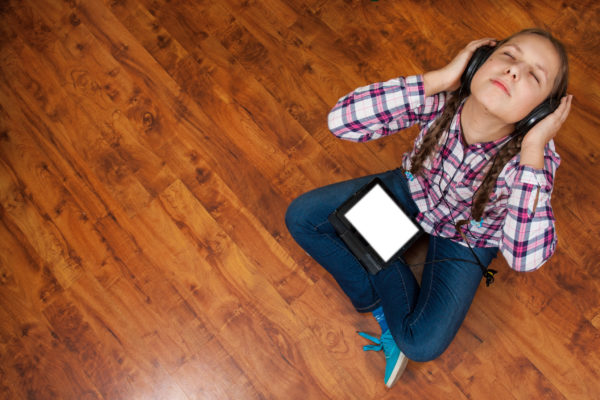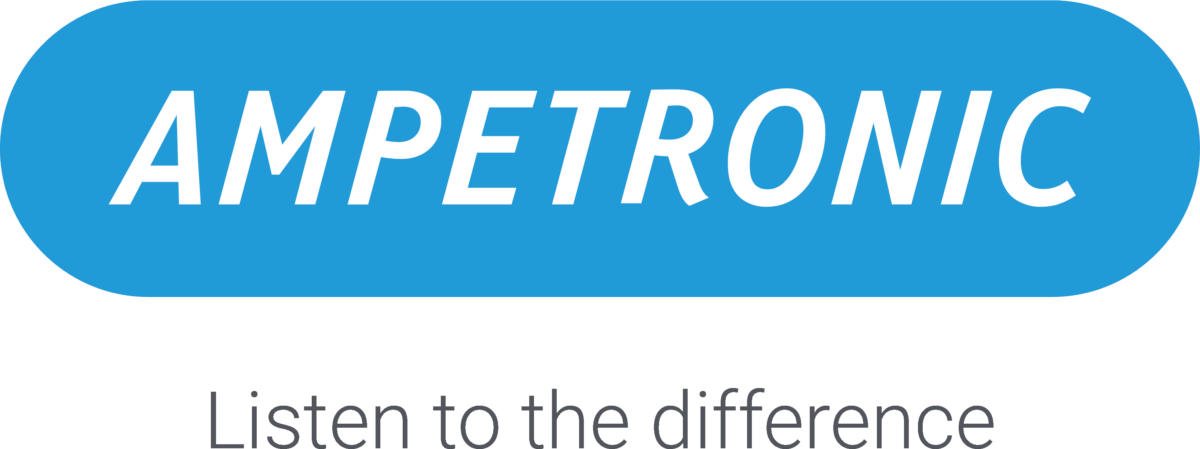Auracast – a new Bluetooth audio

Auracast may be an unfamiliar term to many, but it is quickly starting to appear in the headline features of new Bluetooth-enabled devices, such as phones, earbuds, portable speakers, hearing aids and cochlear implants.
Most people are very familiar with Bluetooth audio. It generally involves two devices pairing directly with one another, e.g. a phone connecting to wireless headphones.
This works well for many applications, but as well as being a one-to-one connection, there are several other limitations that make previous Bluetooth standards inappropriate for assistive listening purposes. Limitations included high battery usage, limited range and latency (delay) that can result in audible echo or visible lip sync problems.
Due to these factors companies in the hearing aid industry has been working in partnership through the Bluetooth Special Interest Group (Bluetooth SIG) for the past decade to develop the next generation of Bluetooth audio.
Developing new Bluetooth capabilities
The result of this working group is the latest Bluetooth Low Energy Audio specifications which aim to address the limitations. In addition, it has announced a capability called Auracast – a new version of broadcast audio. Auracast provides the ability to send a signal from one transmitter to an unlimited number of receivers.
These features are likely to be available in most Bluetooth-enabled audio devices in the future, but it is still in the early announcements phase and there are very few products available to purchase right now which support these new standards.
Bluetooth products for the future
Some products will receive software updates that bring compatibility, but in many cases, the technology will only be added in newer models. It takes time for new technology to filter down from higher-end models and to be adopted by providers like the NHS. Taking this into account, alongside the typical three to seven year lifespan of a hearing aid, it will be many more years before all users have access to these new features.

How will Auracast help people with hearing loss?
To start with, Bluetooth low energy audio offers improvements for existing Bluetooth audio use cases; for example, batteries will last longer, and audio will be more in time with acoustic sounds. Most importantly Auracast opens whole new use cases which haven’t been possible until now.
One of the places likely to drive adoption of Auracast is assistive listening in public spaces. This promises a future where environments such as theatres, meeting and teaching spaces, airports and many more will have broadcast Bluetooth streams where people can directly connect with their own phones, earbuds, hearing aids or cochlear implants.
The first system supporting this functionality has already been announced and demonstrated. Listen Technologies and manufacturer Ampetronic have collaborated to offer the first complete solution to let venues and end users adopt Auracast™ broadcast audio technology now – a product called AURI™. Read more on their website.
How does Auri™ work?
Auri™ uses an installed transmitter to broadcast audio over a large area, potentially over 100 metres range. Importantly it also has minimal delays or latency, as little as 30 milliseconds which is imperceptible (barely noticed) when listening to speech – the equivalent of being stood around nine metres away from the sound source.
As end user devices are limited right now, expect the first assistive listening systems to be receiver based e.g. like an infrared system where a user will pick up a dedicated receiver with headphones or a neckloop from the front desk.
Over time however, as more compatible devices emerge, people will be able to connect directly to the venue sound, making their experience more similar to using an induction loop with a telecoil-enabled hearing aid.
Will it replace hearing loop technology?
There are questions to be answered before these systems become quite as easy to use as a hearing loop. Connecting to an Auracast system in most cases will need an “assistant”, typically a mobile phone, which can scan, list available streams and then tell the hearing aid which stream the user has chosen to connect to.
This “assistant” is required, as unlike hearing loops, there may be several different channels of audio available in the same space. There may be other factors such as streams using other languages, audio description, sound from multiple TV screens, or unrelated broadcasts from other people’s phones or laptops. Therefore, it is important that users have a method to ensure they connect to the correct audio stream.
In more private or sensitive environments such as cinemas, boardrooms or courts the broadcasts may be protected with encryption, in which case a password is needed. This can be entered through the phone in a similar way to connecting to a public Wi-Fi hotspot, or it may be provided via a QR code or other means.
One important point to note is that all this functionality will either be built natively into the phone’s Bluetooth settings, or it will be driven from the app you already use to manage your hearing aids, so no proprietary, third party or venue specific apps will be needed.
Once market saturation is reached, likely in a decade or more, it is expected that Auracast will surpass all the existing assistive listening technologies.
However, there is a long transitional period before that point and during this time the Bluetooth SIG themselves state the importance of this co-existing with other assistive listening technologies, in particular hearing loops. This will ensure that the large user base of people with telecoil-enabled hearing aids are not disenfranchised by a wholesale change to a new technology.
A venue with both hearing loop and Auracast systems installed is best placed to provide truly accessible audio during this transition of technologies.
There is certainly huge potential for Auracast technology to change how we all benefit from wireless audio.
Webpage created: April 2024
